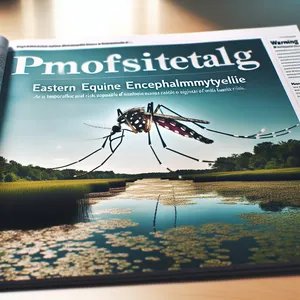Understanding EEE: Symptoms, Transmission, and Prevention Measures
EEE is a rare but serious viral disease transmitted by mosquitoes. The virus can lead to severe neurological damage and is most prevalent in certain areas, including Massachusetts. Recognizing symptoms early and taking preventive steps are vital to reducing risks. In this section, we will examine how to protect yourself and your family from exposure.
Eastern Equine Encephalitis (EEE) is a mosquito-borne virus that can be deadly for humans. In recent weeks, Massachusetts has reported several cases of EEE, leading health officials to urge residents to take increased precautions. EEE is primarily transmitted through the bite of infected mosquitoes, which often thrive in marshy areas common in the eastern United States.
### The Current Situation in Massachusetts
Massachusetts health officials have reported an uptick in EEE cases, particularly in specific regions known for high mosquito populations. As of late September, cases have been confirmed in areas such as Bristol and Plymouth counties. Health experts note that while Massachusetts sees a significant number of EEE cases, fatalities remain rare, with vigilant public health responses usually mitigating severe outcomes.
### Symptoms of EEE
The symptoms of EEE can be severe. Initially resembling flu-like symptoms, they can escalate quickly and lead to high fever, headache, and neurological complications. The CDC reports that about one-third of those who develop EEE die from it, while many survivors experience long-term neurological problems.
### Preventative Measures
To defend against the threat of EEE, Massachusetts residents are encouraged to take proactive measures. Here are some key strategies:
1. **Use Insect Repellent**: Apply EPA-recommended repellents containing DEET, picaridin, or oil of lemon eucalyptus.
2. **Wear Protective Clothing**: Long sleeves and pants can help reduce skin exposure during peak mosquito activity, which is typically during dusk and dawn.
3. **Avoid Outdoor Activities During Peak Times**: If possible, limit outdoor time when mosquitoes are most active.
4. **Eliminate Standing Water**: Remove stagnant water around homes, including bird baths, flowerpots, and clogged gutters, to decrease mosquito breeding grounds.
5. **Public Awareness Campaigns**: The Massachusetts Department of Public Health (DPH) has launched educational campaigns to inform residents about EEE risks and preventative measures.
### Health Alerts and Community Responses
Local health departments are actively monitoring mosquito populations and conducting aerial spraying in areas of heightened concern. Residents are encouraged to stay informed through local health department updates and the Massachusetts DPH. Understanding local EEE activity can help individuals make informed choices about outdoor activities.
### Conclusion
Public health officials continue to stress the importance of vigilance, especially in late summer and early fall when mosquitoes are most prevalent. Educational outreach, community engagement, and preventive actions are essential in combating the spread of EEE.
### Moving Forward
As research into EEE continues, the focus remains on enhancing mosquito control measures and educating the public. Everyone’s participation can help minimize risks associated with this mosquito-borne virus. Regular updates from governmental health departments will provide additional insights into this evolving issue.
Explore More
EEE remains a significant health concern in Massachusetts, particularly as mosquito season peaks. Staying informed and adopting preventive actions are crucial for community health. Engage with us by sharing your thoughts and experiences in the comments below.
